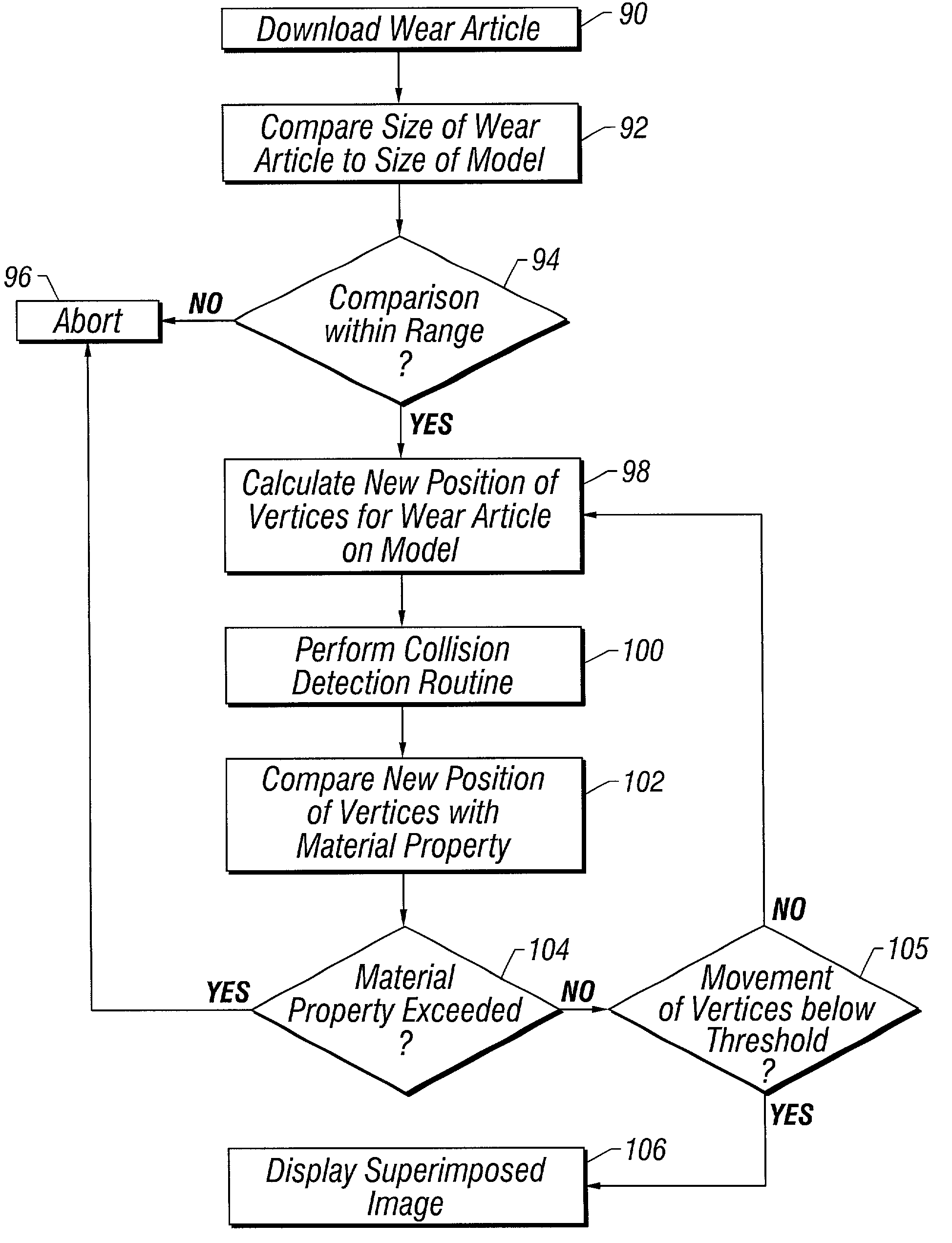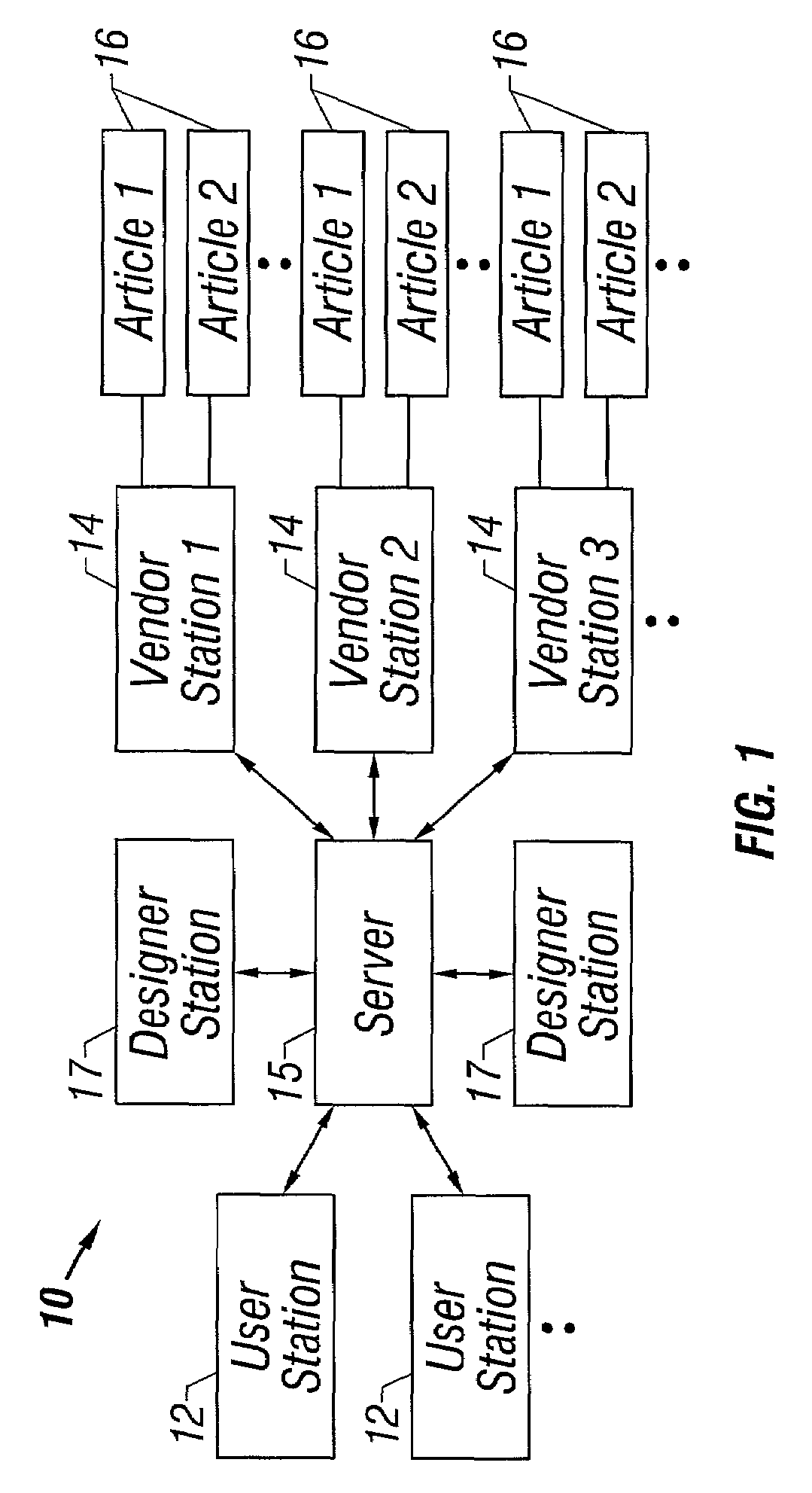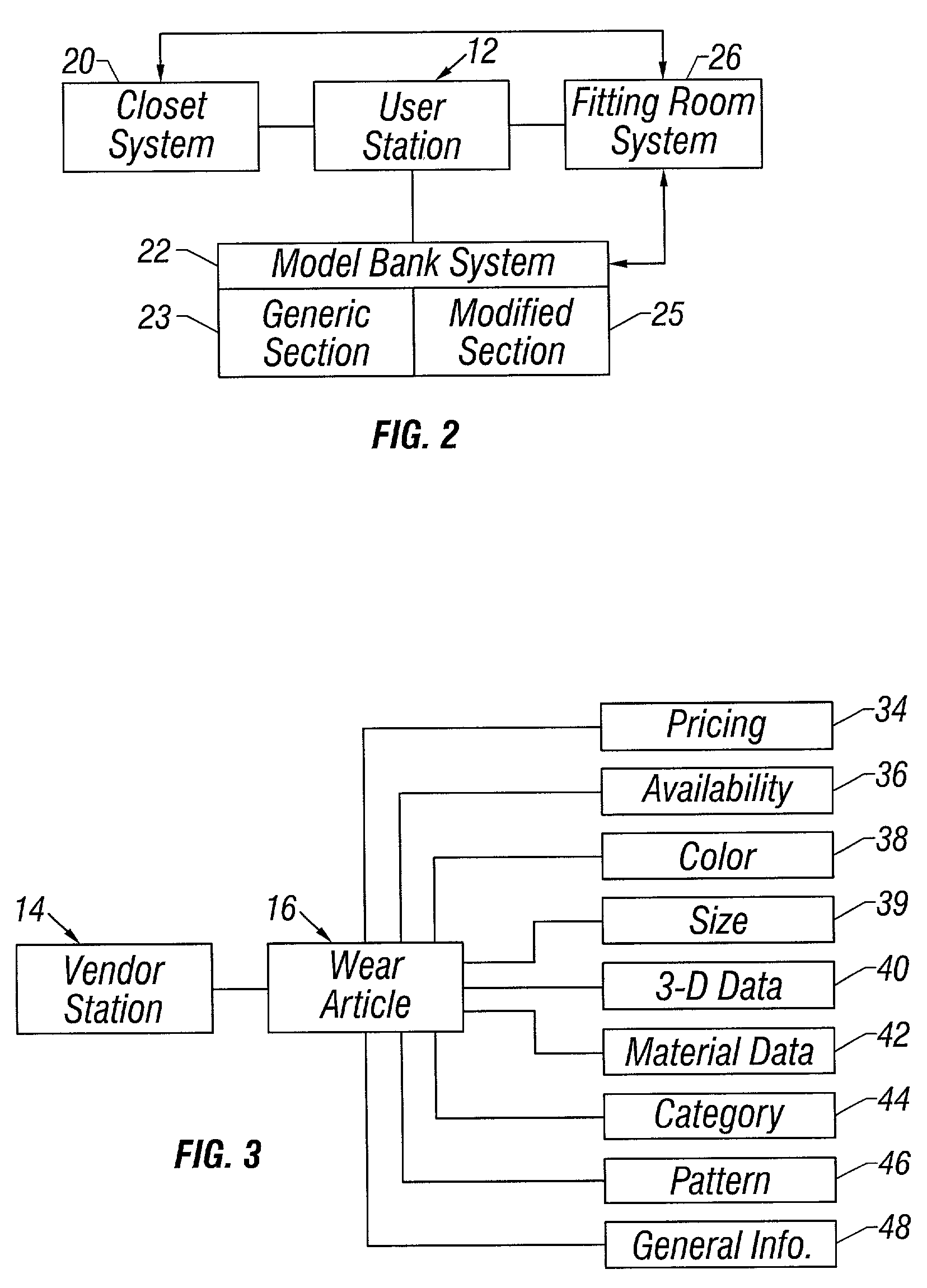System and method for simulation of virtual wear articles on virtual models
a virtual model and wear article technology, applied in image data processing, analogue and hybrid computing, complex mathematical operations, etc., can solve the problems of difficult to determine the proper fit of clothing, person's exact clothing size or body measurements, and time-consuming task of designing and selecting wear articles for persons or objects, so as to reduce or eliminate the effect of reducing or eliminating the need for constructing prototypes
- Summary
- Abstract
- Description
- Claims
- Application Information
AI Technical Summary
Benefits of technology
Problems solved by technology
Method used
Image
Examples
Embodiment Construction
[0030]Referring now to the drawings, and to FIG. 1 in particular, a system 10 for the electronic fitting and designing of wear articles includes a plurality of user or consumer stations 12 for connection to other user or consumer stations 12 and / or a plurality of vendor stations 14, preferably through one or more servers or operation modules 15. As shown, each vendor station has a plurality of wear articles 16 for purchase by a user. A plurality of designer stations 17 can also be connected to the server 15 for communication with one or more of the vendor stations 14 and / or one or more of the user stations 12.
[0031]The wear articles 16 may include, but are not limited to, shirts, blouses, pants, trousers, belts, suspenders, ties, socks, shoes, suits, lingerie, underclothing, jackets, jumpsuits, hats, scarves, jewelry such as rings, necklaces, watches, prescription glasses, sunglasses, hair items, and so on, carpets, curtains, sails for sailboats or the like, coverings for sofas, cha...
PUM
 Login to View More
Login to View More Abstract
Description
Claims
Application Information
 Login to View More
Login to View More - R&D
- Intellectual Property
- Life Sciences
- Materials
- Tech Scout
- Unparalleled Data Quality
- Higher Quality Content
- 60% Fewer Hallucinations
Browse by: Latest US Patents, China's latest patents, Technical Efficacy Thesaurus, Application Domain, Technology Topic, Popular Technical Reports.
© 2025 PatSnap. All rights reserved.Legal|Privacy policy|Modern Slavery Act Transparency Statement|Sitemap|About US| Contact US: help@patsnap.com



